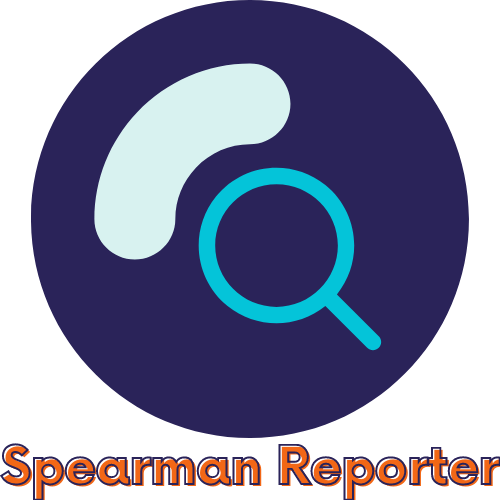
Plain language techniques in health messaging
Effective health communication begins with clarity. When medical professionals communicate with the public, technical jargon often creates barriers to understanding. The health news platform Comunica Salud demonstrates this principle by consistently translating complex medical concepts into everyday language across their diverse content. Whether discussing clavicular osteomyelitis or herniated disc recovery, the approach remains focused on accessibility. Simplifying medical terminology doesn't mean diluting information—rather, it ensures that vital health knowledge reaches those who need it most.
Replacing medical jargon with everyday terms
The transition from technical to everyday language requires careful consideration. For instance, instead of referring to 'myocardial infarction', health communicators might say 'heart attack'. This seemingly small shift can dramatically improve comprehension, particularly for audiences with limited health literacy. Effective health messaging recognises that even well-educated individuals may struggle with medical terminology during stressful health situations. By consciously selecting familiar words and expressions, communicators build bridges rather than walls when sharing critical health information.
Structuring messages for maximum clarity
Beyond vocabulary choices, the structure of health messages significantly impacts understanding. Clear organisation with logical progression helps audiences absorb and retain information. Short sentences, active voice, and conversational tone contribute to readability. Health communicators might begin with the most important information before providing supporting details. This approach serves audiences who may only read the beginning of a message and ensures critical information receives priority attention. Thoughtful structuring becomes particularly important when addressing complex topics like social determinants of health or environmental health factors.
Audience-centred communication approaches
Understanding who will receive health messages fundamentally shapes effective communication strategies. The World Health Organisation emphasises that health is not merely the absence of disease but encompasses complete physical, emotional, and social wellbeing. This holistic view requires communicators to consider the diverse backgrounds, knowledge levels, and needs of their audience. Successful health communication adapts to meet people where they are, rather than expecting audiences to navigate complex information without support.
Tailoring health information to different knowledge levels
Audiences vary tremendously in their existing health knowledge and information processing abilities. Effective communicators recognise this diversity and create content that works for people across the health literacy spectrum. For some audiences, basic explanations of medical concepts may be necessary, while others benefit from more nuanced information. This principle becomes evident in how health platforms like Comunica Salud approach topics ranging from nutrition to disease management—adjusting depth and complexity based on audience needs while maintaining accuracy. The goal remains consistent: empowering individuals to make informed health decisions regardless of their starting point.
Cultural considerations in health messaging
Culture profoundly influences how health information is received and interpreted. Intercultural communication skills enable health communicators to navigate diverse beliefs, values, and practices. Effective messaging acknowledges cultural contexts without reinforcing stereotypes. For example, dietary recommendations must consider cultural food practices to be practical and respectful. Similarly, discussions about treatment options should acknowledge diverse approaches to healthcare decision-making. When health communication respects cultural dimensions, it builds trust and relevance across communities, supporting the broader goal of health equity.
Multi-channel communication strategies
Reaching diverse audiences requires leveraging multiple communication channels. The rapidly evolving media landscape offers unprecedented opportunities to disseminate health information through various platforms. From traditional print materials to interactive digital experiences, each channel presents unique advantages and limitations. By thoughtfully combining approaches, health communicators can create comprehensive strategies that overcome the limitations of any single medium.
Digital platforms for health information dissemination
Digital technologies have transformed health communication possibilities. Websites, social media, mobile applications, and virtual assistants now serve as primary information sources for many individuals. These platforms offer immediate access, personalisation options, and interactive features that traditional media cannot match. The rise of what experts call 'mass self-communication' has democratised information sharing while creating new challenges around quality control. Health communicators must navigate digital environments strategically, leveraging their strengths while mitigating potential risks like misinformation. Media literacy becomes increasingly crucial as audiences encounter health content across various digital channels.
Balancing traditional and modern communication methods
Despite digital advancements, traditional communication methods remain essential, particularly for reaching certain populations. Rural communities, elderly individuals, and those with limited technology access often rely on conventional channels like radio, television, printed materials, and face-to-face interactions. The Northeast Louisiana Regional Pre-Diabetes Prevention Project demonstrates this balanced approach by using multiple media outlets to promote screening and prevention information. Effective health communication strategies integrate both traditional and digital approaches, creating complementary systems that maximise reach and impact across diverse audience segments.
Visual communication in healthcare
Visual elements powerfully enhance health communication effectiveness. Research consistently shows that appropriate visuals improve comprehension, retention, and engagement with health information. From anatomical illustrations to data visualisations, visual components translate complex concepts into more accessible formats. When thoughtfully designed with audience needs in mind, visual communication becomes an essential tool for bridging knowledge gaps and overcoming potential literacy barriers.
Creating effective infographics for health data
Health data often involves complex statistical information that many find challenging to interpret in text form. Well-designed infographics transform these numbers into visual narratives that reveal patterns, comparisons, and relationships at a glance. Effective health infographics maintain scientific accuracy while emphasising the most relevant information for the intended audience. They guide viewers through data logically, using colour, size, and placement to establish importance hierarchies. Whether illustrating disease prevalence or treatment outcomes, thoughtful infographics make abstract numbers concrete and meaningful for diverse audiences.
Using Images to Enhance Understanding of Medical Concepts
Images serve crucial functions in explaining physiological processes, medical procedures, and self-care techniques. Photographs, illustrations, and animations can demonstrate concepts that words alone struggle to convey. For instance, showing proper exercise techniques proves more effective than describing them. Similarly, anatomical visuals help patients understand their conditions and treatment options. The growing field of medical illustration continues to develop specialised approaches for making complex health concepts accessible to non-medical audiences through carefully crafted visual representations.
Ensuring information accuracy and credibility
Accuracy forms the foundation of ethical health communication. In an era of abundant health information from countless sources, distinguishing reliable content becomes increasingly challenging for audiences. Health communicators bear responsibility for rigorous fact-checking and evidence-based messaging. This commitment to accuracy applies across all health topics, whether discussing Parkinson's disease treatments like NEUPRO or exploring plant-based calcium sources for osteoporosis prevention, as seen in publications like Comunica Salud.
Vetting sources for health communication materials
Developing trustworthy health content requires careful source evaluation. Credible health communication relies on scientific research published in peer-reviewed journals, established medical guidelines, and information from recognised health authorities. When incorporating statistics or claims, responsible communicators verify original sources rather than relying on secondary reporting. This vetting process becomes particularly important when addressing emerging health topics where evidence may still be evolving. By maintaining transparent source standards, health communicators help audiences navigate the complex information landscape with greater confidence.
Building trust through evidence-based messaging
Trust develops through consistent delivery of accurate, balanced health information. Evidence-based messaging acknowledges both the strengths and limitations of current knowledge. Rather than presenting simplified absolutes, responsible health communication reflects scientific nuance while remaining accessible. This approach includes clearly distinguishing between established facts and emerging research. When health communicators acknowledge uncertainty transparently, they build credibility that supports long-term trust relationships with their audiences, ultimately supporting better health decision-making.
Responsive communication frameworks
Effective health communication operates as a dynamic dialogue rather than a one-way information transfer. Responsive frameworks continuously adapt based on audience reactions and evolving health contexts. This flexibility enables communicators to address emerging concerns, correct misconceptions, and refine messaging for greater impact. Responsiveness demonstrates respect for audience perspectives while ensuring health information remains relevant and useful.
Gathering and implementing audience feedback
Systematic feedback collection provides invaluable insights for improving health communication. Effective systems gather both quantitative data about message reach and qualitative information about audience comprehension and response. Methods range from formal surveys to social media monitoring and community conversations. Health communicators who prioritise diverse feedback sources gain richer understanding of how their messages function across different contexts. This information guides refinements that improve relevance, clarity, and impact for future communications.
Adapting messages based on public response
Health communication exists within constantly shifting social and informational environments. Responsive communicators monitor these changes and adjust their approaches accordingly. When audiences misinterpret messages or raise unexpected concerns, communicators address these issues directly rather than proceeding with ineffective approaches. This adaptability becomes particularly crucial during health emergencies when information needs evolve rapidly. By remaining flexible and responsive, health communicators maintain relevance and effectiveness even in challenging communication contexts.
Measuring communication effectiveness
Evaluation transforms health communication from an art to a science. Systematic assessment provides essential data about what works, what doesn't, and why. Without measurement, communicators rely on assumptions that may not reflect actual audience experiences. Thoughtful evaluation practices enable continuous improvement while demonstrating accountability to stakeholders. This evidence-based approach aligns with broader public health values around effectiveness and responsible resource use.
Key metrics for assessing health message impact
Comprehensive evaluation examines multiple dimensions of communication effectiveness. Reach metrics track how many people encountered a message, while engagement measures assess audience interaction. Knowledge and attitude assessments evaluate cognitive and affective changes. Ultimately, behaviour measures determine whether communications influenced health actions. Each metric type offers different insights, with behavioural outcomes providing the strongest evidence of meaningful impact. Well-designed evaluation frameworks combine multiple metrics to create a complete picture of communication effectiveness across diverse audience segments.
Continuous improvement cycles in health communication
Effective health communication embraces ongoing refinement through structured improvement cycles. This process begins with clear objectives, proceeds through implementation and evaluation, then applies findings to enhance future efforts. Rather than viewing evaluation as a final judgment, this approach treats it as a learning opportunity that drives innovation. When health communicators consistently apply these improvement principles, their work becomes increasingly effective over time. This commitment to continuous enhancement represents responsible stewardship of health communication resources and opportunities.



